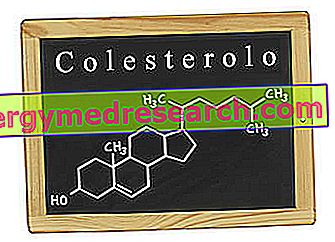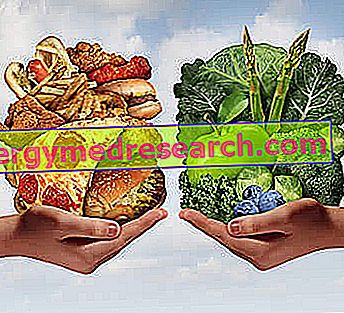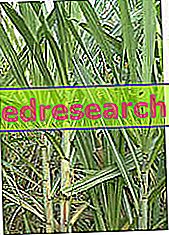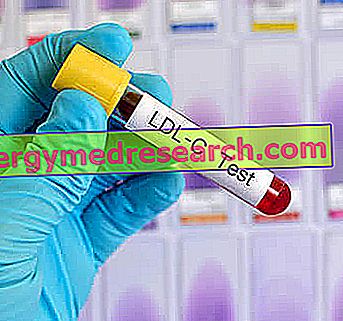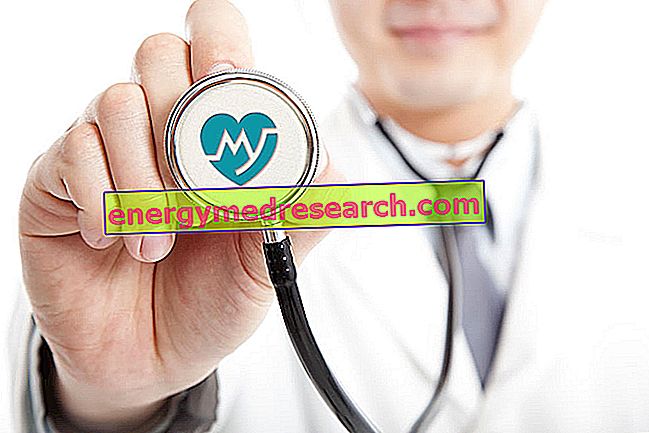What does it mean? Low cholesterol, termed hypocholesterolemia in medical terms, is a metabolic disorder characterized by low concentrations of cholesterol in the blood. While the opposite problem, defined as hypercholesterolemia, is quite common in the inhabitants of industrialized countries due to the well-known food excesses, particularly low cholesterol levels are recorded above all in the regions suffering from malnutrition
Category cholesterol
What's this What is cholesterol? Cholesterol is a steroid having a polycyclic structure called "cyclopentanoperidrofenantrene"; it is white in color and has a consistency similar to that of wax. It is produced only by organisms of animal origin that could not survive without it; the plants produce and contain other structurally similar lipid substances, called phytosterols
Generality HDL means "High-Density Lipoprotein", meaning "high density lipoprotein". Technically, HDLs do not consist of "pure cholesterol" and also contain specific proteins that serve to transport fats in the blood. There are various types of lipoproteins. HDLs are beneficial and are therefore called " good cholesterol "; others are considered potentially harmful and are therefore called "bad cholesterol"
See also: food atherogenicity index - total HDL cholesterol ratio The plasma atherogenicity index is calculated using the following mathematical formula Plasma atherogenicity index = [Log (Triglycerides / HDL cholesterol)] * Interpretation of results INDEX OF ATEROGENICITY CARDIOVASCULAR RISK <0.11 Bass 0
What does it mean? When cholesterol levels remain high, despite proper diet and regular exercise, we speak of familial hypercholesterolemia or primary hypercholesterolemia. In common language, this term emphasizes the existence of a more or less close relationship between high cholesterol values in the blood and particular "genetic anomalies". In
The hypocholesterolemic adjective is reserved for any dietary, behavioral, pharmacological or other treatment capable of reducing plasma cholesterol levels. There are really many supplements and foods that promise results in this regard, but their effectiveness is limited upstream by the fact that cholesterol values depend for about 80% on internal body synthesis and only 20% on food intake; if this is reduced upstream, the positive effect of the various cholesterol lowering supplements that act by reducing the intestinal absorption of the lipid (fiber supplements, plant sterols, etc.) i
Polycosanols are natural substances present in various vegetable waxes and in particular in sugar cane, from which they are extracted and marketed without medical prescription. From the chemical point of view, it is a mixture of long chain linear aliphatic alcohols (octacosanol, tetracosanol, esacosanol and others)
Statins (pravastatin, atorvastatin, cerivastatin, fluvastatin) are among the most effective drugs for reducing total cholesterol and LDL. As mentioned several times in the numerous articles dedicated to cholesterol, the concentration of this lipid in the blood is heavily influenced by its endogenous synthesis (80%), while the contribution of the diet is altogether modest (20%)
LDL cholesterol is known to be a very important "thermometer" of cardiovascular risk. Its values are in fact linked to the theoretical probability of suffering a disease related to atherosclerosis, such as angina pectoris, myocardial infarction, stroke or intermittent claudication . These diseases, overall, represent the leading cause of death in our country and in the rest of the industrialized world; their etiopathogenesis is therefore the subject of intense research. At
Xanthomas are yellowish plaques or nodules due to deposits of macrophages stuffed with fat in the skin. They appear as soft, yellow masses with a well-defined border, located just below the skin surface. The diameter of the xanthomas can vary from a few millimeters to over seven centimeters. Causes: why are xanthomas formed
Definition A xanthelasma is an anesthetic yellowish-whitish papular or nodular lesion that occurs in the eyelids and / or in the surrounding skin areas. These small growths are formed by deposits of lipid material in the subcutaneous area. The xantelasmas have the appearance of a soft, flat and roundish plate, clearly delimited under the skin; they can appear on one or both eyelids, in particular at the inner corner of the upper ones, in the area closest to the nose (internal singing)


